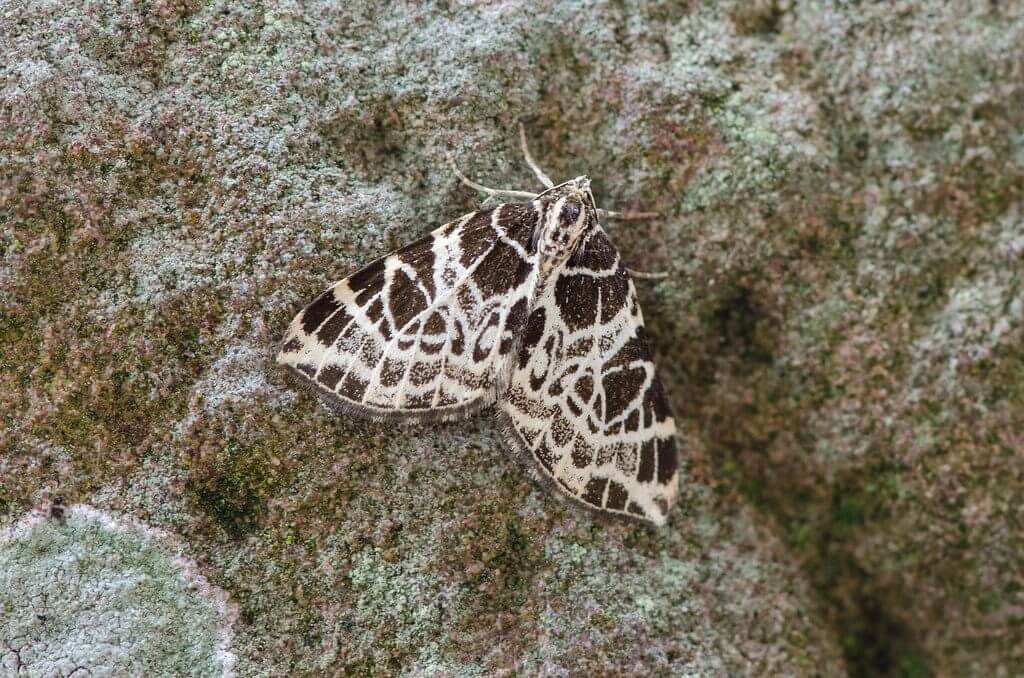Tim writes: As a teenager I remember reading E B Ford’s New Naturalists book on Moths, where this species was on a plate labelled “Moths with Restricted Distributions” that showed fifteen of Britain’s rarest moths. The first moth in this plate was the beautiful Netted Carpet from Windermere. Since that day it is a species I have longed to see. It has always been rare and localised in Britain because its only larval foodplant (Touch-me-not Balsam) is also rare and localised. The moth used to be found in North Wales but has not been reliably seen there since 1973. It is now almost totally restricted to a few wet woodlands in Cumbria’s Lake District, where it was first discovered in 1856. I managed to flush this individual during the day and watched it land, where I took its photograph. The scientific name is Eustroma reticulata and both names refer to its beautiful wing pattern. Eustroma is the frame that supports a mattress, while reticulata means netted.
Taken with Nikon D7000 and Nikkor 105mm macro 1/100 f6.3 ISO 800
[registration_form]

A great picture of a beautiful moth.
A pity they can’t start to eat Himalayan balsam. Here’s hoping.
A most interesting bit :The Netted Carpet feeds solely on this plant, and it gets more protein from feeding on the unripe seeds than any other part – so it has ‘learnt’ to bite through the ligaments that fire the seed out explosively before eating them! Isn’t nature wonderful.
copied from Saith Ffynnon Wildlife Plants
That is brilliant. Even more of a natural control for Himalayan balsam if it would just broaden it’s diet a bit. If netted moth caterpillars could be brought up artificially on Himalayan balsam, would they as adults choose HB as food plant for their larvae? There was once a weed in Australia that was absolutely running rampant, smothering vast swathes of the country, until for some reason a native butterfly started using it as a larval food plant. Result for a short while there was a massive population explosion of that butterfly, trains were actually sliding on their rails because there were so many dead butterflies on them. Richard Mabey wrote about it in his splendid ‘Weeds’ book, but I don’t have it to hand. Now populations of both weed and butterfly are more reasonable. Is there a dimension of biological control that isn’t getting the attention it deserves? HB isn’t as bad as some, but it’s not helping many native plants and invertebrates and it is pretty ubiquitous these days.